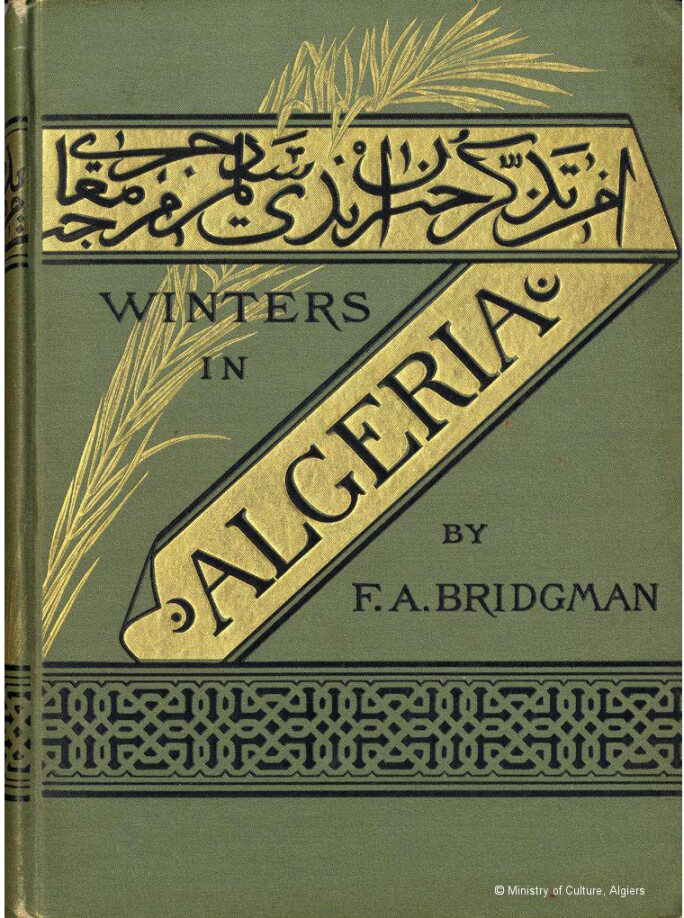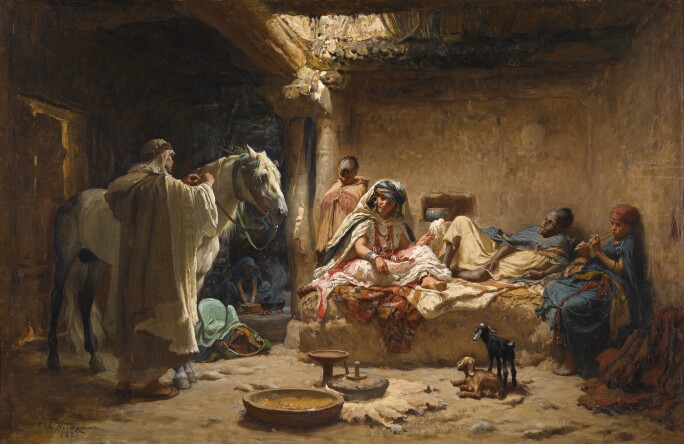I n An Algerian Street amply demonstrates Frederick Arthur Bridgman’s first-hand knowledge of North African life, and the proto-cinematic, highly finished composition he painted at the height of his career. The work is a highlight of Sotheby’s forthcoming Orientalist Sale in London on 30 April.
Frederick Arthur Bridgman did not initially set out to be an Orientalist. His artistic ambitions took him from New York to the artists’ colony in Pont-Aven in Brittany, and there he might have remained for his career. Instead, partly thanks to the assistance of fellow artist Thomas Eakins, Bridgman shortly found himself in the enviable position of studying under Jean-Léon Gérôme at the Ecole des Beaux-Arts in Paris. Bridgman became one of Gérôme’s best pupils, absorbing his master’s technical precision and interest in the Islamic world. As Bridgman later reflected, his subsequent trip to North Africa made a strong impression:

‘Was it due to the fact of my having been born in Alabama, with sunlight in my bones, that I felt at home in Algeria when I first set foot on her genial soil in 1872? No sooner had I set foot on land than I began with joy to sniff the odors so peculiar to Oriental towns – perfumes of musk, tobacco, orange-blossoms, coffee, hashish – a subtle combination which impregnates Algerine clothing and hovers about the shops and bazaars’
The quote is taken from the travel articles which Bridgman first published in Harper’s Monthly Magazine, and later in Winters in Algeria. His evocative travelogues take the viewer into the artist’s world and the experiences which lay behind his compositions, from arriving in Algeria by boat, to the privileged access he gained to private homes. While he reflected that life for a foreign visitor in Algeria was considerably easier after half a century of French presence in the country, like most Orientalist artists Bridgman endured significant difficulties on his travels. Life in the town was less arduous than in the desert (where he nearly died of sunstroke), but it still involved navigating cultural mores. Bridgman soon learnt that any local person would likely refuse if asked directly to pose for a painting, but if he simply took out his sketchpad and worked then no one would raise an objection. Still, the activity of the street did not always make his task easy:
‘Alas! With all my precautions, my easel and canvas were toppled over as many as four times in one day, not to mention other pleasant reminiscences, such as having the colors transferred from my palette to the folds of a burnoose swishing by; and it sometimes happened that a wealthy native merchant was the victim, and had good cause for regret in the presence of Prussian-blue on his delicate rose-colored broadcloth’.
This aside, Bridgman reflected that Algeria was a wonderful place to paint: ‘there are few places where an artist is treated with as much or more courtesy by the higher classes, and is so little bothered by the common herd as here’. The painting in our sale conveys a mood of quiet contemplation, as a rider takes a refreshing drink while conversing in the street, the woman next to him wearing a colourful gandoura dress. High above in the background, warm evening sun falls on the pale walls, possibly corresponding to the Casbah in Algiers. Street scenes of this type complement the intimate interiors Bridgman also made his name for, such as An Interior in Biskra sold in Sotheby’s Orientalist Sale last year:
Sotheby’s Orientalist Sale will take place on 30 April 2019 in London. The sale remains open for consignments until late February.




